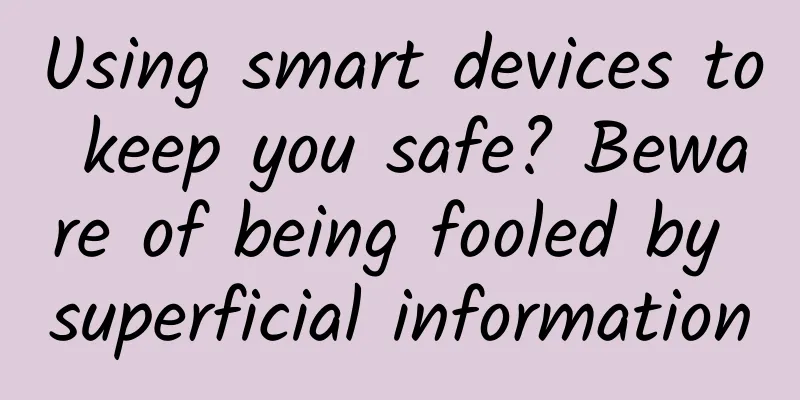The cute character is actually a master, a hero and a traitor?

|
In the popular Japanese science comic "Cells at Work!", platelets are designed as cute little girls. When blood vessels are damaged, they appear in groups and gather together to seal the wound to stop bleeding. But in fact, this is only people's initial understanding of platelets. Platelets, as a "lower cell" without a nucleus, participate in intercellular dialogue and collective decision-making like "higher cells" such as neurons, using the same language. This article is authorized to be excerpted from "The Secret Language of Cells" (Beijing United Publishing Company, September 2022 edition), and the title is added by the editor. By Jon Lieff Translation | Gong Yin Scientists were surprised to find that lowly platelets, which have no nucleus and are not even cells, can communicate delicately with many other cells. Until the recent findings, platelets were thought to be parts of larger cells whose only function was to clump together to stop bleeding, and occasionally clog arteries due to misplaced clumping. Platelets can cause heart attacks and strokes by accidentally forming clumping in the blood vessels of the heart and brain. Before we discovered that platelets talk to immune cells, vascular cells, and tissue cells, it was hard to imagine that platelets could function like cells. How do platelets generate signals and receptors? How do they adapt to changes without a nucleus and DNA? The answer is that platelets acquire a lifeline long before they leave their mother cells, large bone marrow cells called megakaryocytes. These mother cells provide the platelets with a full set of messenger RNA molecules encoded by their DNA, as well as protein-making machinery called ribosomes. With all this support, platelets can compile their own complete signal and receptor information. Like the cellular dialogue that most immune cells engage in when they first respond to foreign enemies and injuries, the communication that platelets engage in is also important and diverse. Platelet signaling plays a key role in defending against microorganisms, and often leads the first cells to fight against microorganisms in the body. With their advantage in numbers throughout the body, platelets can quickly find microorganisms and send messages to immune cells, stimulating them to activate defense mechanisms. While summoning white blood cells, platelets will actively join the ranks of immune cells to fight infection with them. Platelets act as helpers for T cells, helping them guide B cells to produce better antibodies. In addition to signaling immune cells to defend against foreign enemies and fighting microorganisms on their own, platelets have to solve another hemodynamic problem, that is, "hemostasis", which is not as simple as imagined. In the process of hemostasis, platelets must also deal with the exact needs of various tissues for blood flow at the same time. Too much or too little blood flow will damage tissues. If the blood is coagulated excessively, the blood clots will spread throughout the blood system, thereby destroying multiple areas of the body at the same time. If the blood is not coagulated enough, the tissues will bleed to death. As the first responder to injury, platelets must stop bleeding immediately, maintain adequate blood flow, and fight microbes. When tissue is damaged, microbes can enter the tissue through trauma or foreign objects. Tissue and blood vessel damage trigger multiple levels of coagulation factors, which in turn guide platelets to form blood clots by changing their shape. Platelets also signal to attract immune cells to repair tissue and assist in the formation of extracellular scaffolding molecules that can form a scar. It can be said that platelets are involved in all of the above activities at the same time. Platelets, red blood cells and fibrin together form a blood clot (Electron micrograph, David M. Phillips/Science Photo Library) A Closer Look at Platelets Only mammals have platelets; other organisms use different blood cells to do the same job. As mentioned earlier, platelets are made by megakaryocytes in the bone marrow. In response to signals from the liver and kidneys, the megakaryocytes expand 20 times their original size and produce thousands of platelets at once. These platelets can live for about a week. Platelet blasts travel from the bone marrow to the spleen, where they are stored until they are needed. These cells are released in response to signals from neurons. This extensive dialogue between cells ensures that the supply of platelets is just what is needed, but not too much. Platelets can change their shape so quickly because they are in a wrinkled state, with a lot of extra cell membranes curled up into wrinkles. Other cells send messages to platelets, telling them when to change shape. The scaffold molecules inside the platelets respond to these messages by growing many long "arms" that extend from the platelet's body. The platelet "metamorphosis" is divided into three stages: growing new "arms", stretching out the body, and thickening in the center; at this time, the "generator" just below the platelet membrane structure can quickly expand the membrane surface area without extending itself or adding new materials. After that, the platelet's arms will attach to the ruptured blood vessel. Then, multiple platelets "hold hands" and form an embolic structure together. Platelets produce messages and attack molecules, which they send via vesicles containing chemicals. But platelets only use vesicles to send messages when their bodies grow arms instead of circles. The vesicles carry three signaling molecules, each with a different purpose: one to regulate blood flow; a second to attach to and kill microbes; and a third to reshape blood clots to repair damaged organs. To kill a microbe, the platelet's arms must first grab the microbe and then inject it with a vesicle. Platelets have many receptors that can sense each microbe, and they can also provide specific toxic compounds to kill each microbe. Comprehensive attack on microorganisms Platelets can sense the type and exact location of damage and rush there. Because they outnumber other blood cells, platelets are the biggest players in initially addressing the problem at the point of attack, while they wait for more powerful T cells and neutrophils to arrive to back them up. Upon detecting a microbe, platelets change shape and release attacking molecules. To fight microbes, platelets use a variety of techniques. When faced with a difficult species of bacteria, platelets release a variety of vesicles, some containing phosphate energy particles and others containing proteins that use these energy particles to attack the microbes. The bacteria respond to the attack with signals of their own that block the platelets from secreting and breaking down the platelet proteins. The platelets then secrete enzymes that break down the bacteria's offensive proteins. This battle continues in many forms. For more information on the bacterial battle, see Part 3 of this book, which covers microbes. The secretions that platelets use to fight microbes can perform multiple functions at once. Recent studies have found that an enzyme known to initiate the clotting process also cuts platelet products into multiple fragments, each of which targets a specific microbial species. Another multifunctional molecule produced by platelets forms different fragments and modules depending on the microbe, and these unique molecular structural regions send out help signals to other cells to kill various types of microbes. When platelets attack microbes directly, the signals they send mobilize a stronger attack. In the process of fighting microorganisms, platelets also use special receptors. Internal receptors can sense the number of remaining offensive molecules behind them. When necessary, signals are sent from the inside to mobilize messenger RNA and ribosomes to produce more offensive molecules, and the amount produced can sometimes reach 100 times the original amount. By using receptors, platelets can also analyze specific fat molecules sticking out of cells to distinguish between human cell membranes and microbial cell membranes. On this basis, platelets are able to attack only microorganisms and not human cells. Platelet-derived molecules are a powerful defense against a wide variety of microorganisms, including bacteria, fungi, protozoa, and many viruses. Recent studies have shown that platelets are a critical first line of defense against HIV (human immunodeficiency virus). Platelet factors have also been shown to limit streptococcal heart infections. A specific platelet molecule can enter red blood cells occupied by microorganisms and attack the parasite that causes malaria, and the more platelets in the body, the greater the chance of success in fighting malaria. Platelets are also effective against a variety of fungi. In order to attack worms, platelets produce hydrogen peroxide and other offensive molecules. Although platelets cannot "eat" microorganisms, they can block the path of microorganisms and wait for larger macrophages to devour them. Helper immune cells The most important function of platelets is probably to act as helper immune cells. They scan the surface of immune scavenger cells to identify which cells are infected and can no longer fight microbes. They then send a signal to convey their verification results and call in the strong troops to fight. Platelets stimulate receptors that bind to microbes, thereby helping white blood cells to engulf the microbes more easily. Platelets have a variety of immune signal receptors, which allows them to travel throughout the body to respond to calls for help from very distant places. Once they reach their destination, platelets immediately use a large number of receptors and signals to respond to various types of cell damage. Some platelet signals cause white blood cells to respond quickly, and using many of the most powerful immune signals, platelets can also cause inflammation. After assessing the current situation, platelets send a series of messages depending on the situation. But because the specific process is relatively complex, the signals are sometimes wrong, which can lead to clotting in the wrong place. Platelets enhance the ability of white blood cells to engulf microbes. If a strategy is determined to be necessary, platelets signal a specific type of scavenger white blood cell to head to the site of a fierce battle with the foreign enemy. The scavenger cells, which are responsible for engulfing the debris, then produce enzymes that cut the molecules secreted by the platelets into small fragments. This attack requires the combined action of platelet signals and scavenger cell enzymes. Microbes fight back with their own enzymes, trying to destroy the platelet's offensive molecules. However, these enzymes can also inadvertently create smaller fragments of platelet molecules that harm the microbes themselves. Neutrophils lay traps for microorganisms, which we call "hunting nets." These hunting nets are made of DNA molecules and proteins. Platelets participate in the entire net-laying process, building themselves into a fiber assembly together with the hunting nets and white blood cells. This complex structure can recruit and activate more immune cells. On this basis, platelet fibers can attach microbial molecules more widely in order to kill them. The hunting net is a key attack mechanism that can kill a variety of bacteria without damaging human tissues. Platelets also help in other ways. To properly solve a problem, powerful T cells need other cells to present microbial fragments or particles at the site of cell damage. Platelets themselves are not responsible for presenting substances to T cells, but they participate and increase the specificity of the presentation process. To do this, platelets establish contact with the microorganism and quickly bind it to the presenting cell. In cases such as viral invasion, platelets also send multiple activation signals directly to T cells. At the same time, the signals sent by platelets also remind T cells to attack other infected cells. Depending on the situation, platelets send signals to summon the specific type of T cell needed. These platelet signals are also important for critical communication between T cells and B cells to help produce the best antibodies. Platelets and Cancer Cancer cells have a unique relationship with platelets. As we will see in Chapter 8, cancer cells need support from local tissue cells, immune cells, and endothelial cells. Recent studies have found that platelets also help when cancer occurs. Platelets can use the fibers that are normally used for blood clotting to coat cancer cells, protecting them from immune scavenger cells and killer immune cells. Platelets help build the structure of metastatic cancer colonies, and the more platelets there are at the site of colonization, the worse the disease prognosis. Emerging treatments could play a role in addressing this platelet aggregation problem. In addition, another platelet signal triggers cancer cells to transform from passive cells that barely move to aggressive cells that move, allowing malignant tumors to grow. In the absence of platelet signals, invading cancer cells may return to a more passive state, and the spread of cancer cells would cease. The clots formed by platelets can promote cancer development, and the cancer signals themselves can change these clots into specific types, such as small clots, widespread dangerous clots, emboli that damage the lungs, etc. Through the dialogue between platelets and tissue cells, wandering cancer cell groups can reach distant tissues and begin to form new colonies. Although each tissue in the human body is different, platelets can use signals that are very unique to each tissue. Cancer and platelets interact in other ways, too. Cancer cell signals can stimulate platelets to talk to nearby tissue cells, which, given the platelets' existing relationships with these local cells, can lend more support to cancer. Platelet signals can also make blood vessels leaky, allowing cancer cells to enter and exit blood vessels more easily. It is hard to imagine that platelets, cells without a nucleus, can do so many things! About the Author Jon Lieff , geriatric psychiatrist, distinguished life fellow of the American Psychiatric Association, holds a bachelor's degree in mathematics from Yale University and a doctorate in medicine from Harvard Medical School. While serving as president of the American Association of Geriatric Psychiatry (AAGP), he helped to found the core journal in the field of geriatric psychiatry, the American Journal of Geriatric Psychiatry. He is good at finding targeted new treatment options for brain-injured patients and is a pioneer in this field. |
>>: Do plants have the same senses as animals, such as hearing, seeing, smelling and tasting?
Recommend
Why does "couple cancer" occur? The "killer" behind it is ignored by many people
Today, the topic is "A couple both got cance...
3 ways to improve user retention through APP operation!
With the disappearance of the Internet's demo...
Case Study: 6 Methods of Growth Hacking
The article mainly introduces two strategic imple...
What is the configuration for renting a server in the education industry?
Education is a sunrise industry and the market de...
NetEase Cloud Music product analysis!
This article is quite long. It comprehensively or...
Chengming Taiyi Jiuku Tianzun Dharma Training Course (Seventh Session, March 2021)
Chengming Taiyi Jiuku Tianzun Dharma Training Cou...
April Fools' Day poster collection: Baidu and Tencent show off their black technology
April is probably the most ridiculous month. You ...
[Practical Information] Information flow advertising landing page treasured by people from all industries!
We all know that the task of most landing pages i...
How much does it cost to make a candied fruit app in Jinzhong?
Jinzhong candied fruit applet production price 1....
Discussion from 4 aspects: Analysis of competitive products of financial diversion products (I)
The cooperation model of the financial traffic di...
Analysis of the competition between TikTok and Tencent Weishi
Short videos have become an important part of peo...
Bidding promotion: How to optimize core words and effectively manage keywords?
We have compiled a list of common bidding problem...
Huawei's car intelligent system patent was exposed again. It had applied for an autonomous driving patent three years ago.
It is not the first time that Huawei’s patents in...
Hu Quan: Killer Applications in the Industrial 4.0 Era
In the era of Industry 4.0, from the perspective ...
Oceans are turning into deserts! How can we avoid the destruction of fisheries under climate change?
In recent years, climate change has led to the fr...









